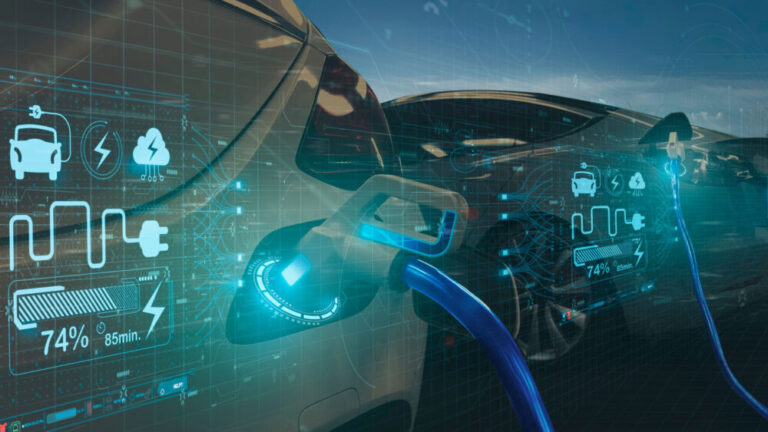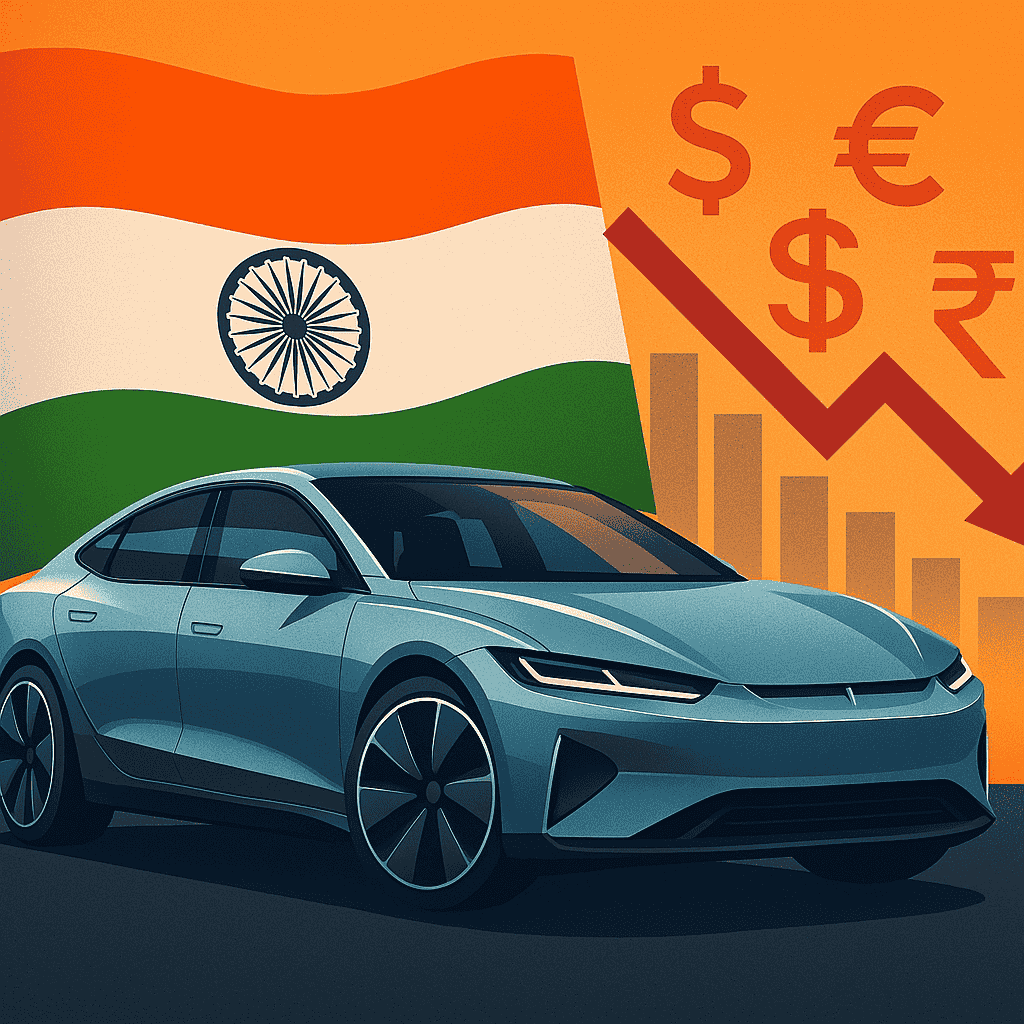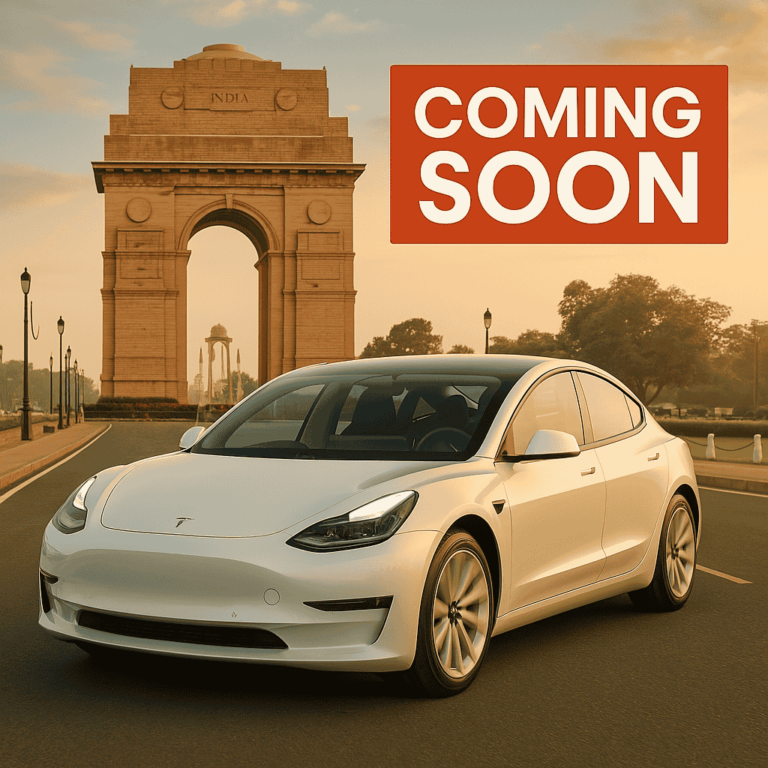
add here text

India Makes EVs Affordable: Tariff Cuts Coming in 2025
pratik r. sonawane
April 06, 2025
related topics
India is on the brink of a major shift in its electric vehicle (EV) import policy in 2025. In a bid to deepen trade ties with the United States and attract global automakers like Tesla, the Indian government is actively considering a reduction in EV import tariffs. This move signals a new era for EV buyers, global investors, and clean mobility enthusiasts across the country.
In 2025, India is planning a major reduction in electric vehicle (EV) import tariffs, possibly from 100% to as low as 15%, to attract global automakers like Tesla and strengthen trade ties with the United States. This move aims to make premium EVs more affordable for Indian buyers while encouraging foreign investment and local manufacturing. The government plans to link tariff benefits with Make in India initiatives, ensuring long-term economic gains. Indian EV consumers can expect more choices, better pricing, and advanced EV technology, while the policy boosts charging infrastructure and industry competition. If implemented, this could be a game-changing moment for India’s electric mobility future.

As of early 2025, India levies up to 100% import duty on fully built electric cars. These high tariffs have long discouraged premium global EV brands from entering the Indian market. However, the government is now proposing a slashed import tax of 15%–30% for EVs priced below $35,000 (approx. ₹29 lakh) to incentivize foreign participation.
This new proposal, if implemented, will pave the way for international EV giants to bring their cars to Indian roads at affordable prices.
🔗 Source: Reuters – India Weighs Tariff Cuts
🤝 2. Strengthening India–US Trade Relations Through EV Deals
India’s willingness to cut tariffs is tied closely to ongoing bilateral trade talks with the United States. By easing import restrictions on EVs, India aims to resolve long-standing trade disputes and create a mutually beneficial framework that supports green technology exchange.
The move not only helps Tesla’s India entry but also allows Indian automakers to access American clean energy markets more smoothly.
🔗 Source: Economic Times – India-US Trade Dialogue
One of the most exciting outcomes of this policy is the potential entry of Tesla into the Indian market. Elon Musk’s EV giant has long expressed interest in launching its vehicles in India, but the previous import taxes made the pricing unviable.
With proposed tariff cuts, Tesla could bring its Model 3 or Model Y to Indian customers, likely starting below ₹30 lakh — making luxury EVs far more accessible.
🔗 Source: Business Standard – Tesla’s Entry Hinges on Duty Cuts

To ensure long-term benefits for the domestic economy, the government is linking import concessions to a localization plan. EV manufacturers like Tesla, Rivian, or Lucid would need to set up factories or local assembly units within 2-3 years of market entry.
This policy ensures that EV tariff reductions support Make in India, stimulate local employment, and boost EV battery supply chain development.
🔗 Source: Mint – India’s EV Localization Policy
If the tariffs are reduced, Indian consumers could gain access to premium international EVs at lower prices. This would significantly heat up competition, pushing Indian automakers like Tata, Mahindra, and Ola Electric to innovate further and drop prices.
It also signals a big win for EV buyers looking for feature-rich, high-performance electric cars with global technology standards.
With the expected influx of new EV models, the Indian government and private companies are doubling down on EV charging station development. A wave of foreign EV tech collaborations may also enter the Indian market, bringing innovations like ultra-fast charging, smart navigation, and battery leasing models. New EV brands will push for better service networks. This in turn will accelerate India’s overall EV infrastructure development.
🔗 Source: ET Auto – Charging Infra Plans 2025

If executed with the right checks and balances, EV tariff reductions in India 2025 could unlock massive benefits. Global automakers get market access, Indian EV makers face healthy competition, and consumers enjoy a wider range of affordable and innovative EV options.
The policy could become a template for sustainable trade and green mobility partnerships worldwide.
🔗 Source: Niti Aayog EV Vision
📝 Conclusion: India’s EV Import Policy Shift Could Be a Game Changer
2025 could be the year India boldly opens its doors to global electric vehicle innovation. By reducing import tariffs and encouraging local production, the government is striking a smart balance between sustainability, consumer benefit, and economic growth.
As the world watches, India is sending a clear signal: The future is electric, and it’s arriving fast.
✅ Yes, Tesla is expected to enter the Indian market if the proposed 15–30% import duty is approved, especially for models priced under $35,000.
✅ Domestic manufacturers like Tata and Mahindra may face increased competition, but it will also encourage innovation, better pricing, and product upgrades.
✅ Likely yes. Lower import duties could significantly reduce the price of high-end foreign EVs, making them more accessible to Indian buyers.

about author
Share this article
subscribe for weekly updates



